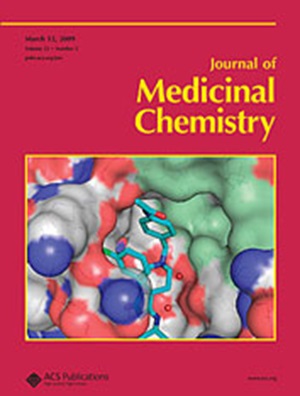Regio-isomerization Optimization Strategy for Photosensitizers: Achieving Ultrahigh Type I Reactive Oxygen Species Generation to Enhance Cancer Photoimmunotherapy
IF 6.8
1区 医学
Q1 CHEMISTRY, MEDICINAL
引用次数: 0
Abstract
Phototherapy, renowned for its noninvasiveness, is widely employed in tumor treatment. However, the tumor microenvironment is usually hypoxic, with insufficient reactive oxygen species (ROS) production, severely limiting its application. Herein, we introduce a regio-isomerization optimization strategy and have synthesized four regio-isomeric photosensitizers featuring a donor–acceptor (D–A) configuration by tactically varying the linkage sites between D and A. Among them, TAF-3 with excellent photostability has an ultrahigh type I ROS production efficiency (4.79 times that of methylene blue) and a photothermal conversion efficiency of 41.7%. TAF-3 improves the conjugation degree; produces an appropriate intramolecular charge transfer effect, which enhances its optical properties and phototherapeutic efficiency; and promotes a stronger immune cell death effect, reducing postoperative melanoma recurrence by 60%. Overall, the optical attributes of D–A type photosensitizers can be tailored through the precision modulation of regio-isomerization, offering a promising avenue for the advancement of clinical photosensitizers suitable for phototherapy.

求助全文
约1分钟内获得全文
求助全文
来源期刊

Journal of Medicinal Chemistry
医学-医药化学
CiteScore
4.00
自引率
11.00%
发文量
804
审稿时长
1.9 months
期刊介绍:
The Journal of Medicinal Chemistry is a prestigious biweekly peer-reviewed publication that focuses on the multifaceted field of medicinal chemistry. Since its inception in 1959 as the Journal of Medicinal and Pharmaceutical Chemistry, it has evolved to become a cornerstone in the dissemination of research findings related to the design, synthesis, and development of therapeutic agents.
The Journal of Medicinal Chemistry is recognized for its significant impact in the scientific community, as evidenced by its 2022 impact factor of 7.3. This metric reflects the journal's influence and the importance of its content in shaping the future of drug discovery and development. The journal serves as a vital resource for chemists, pharmacologists, and other researchers interested in the molecular mechanisms of drug action and the optimization of therapeutic compounds.
 求助内容:
求助内容: 应助结果提醒方式:
应助结果提醒方式:


